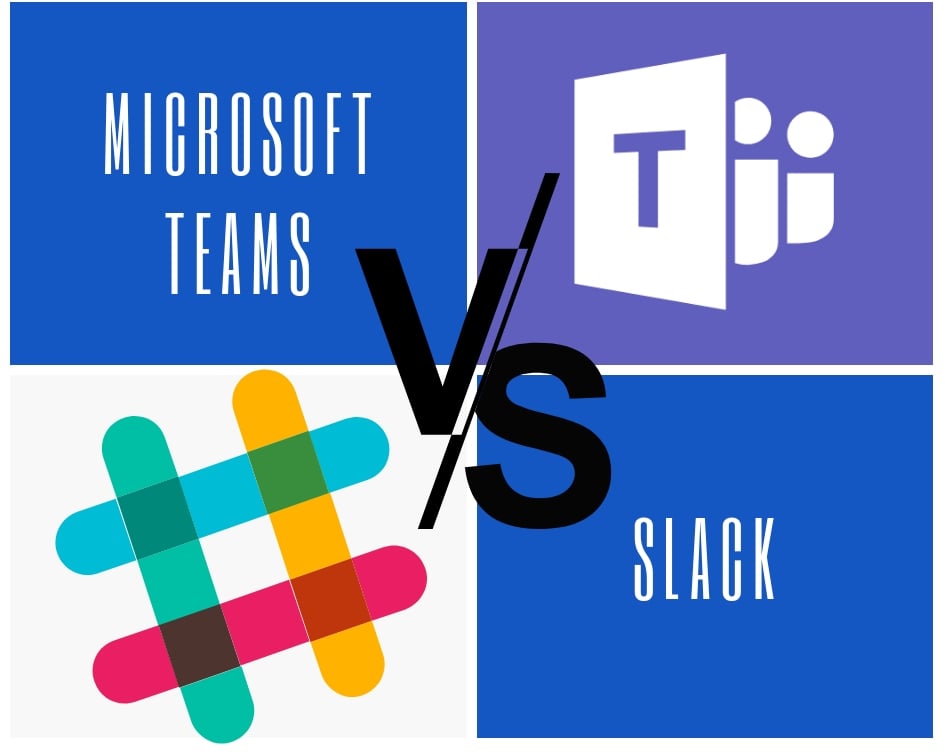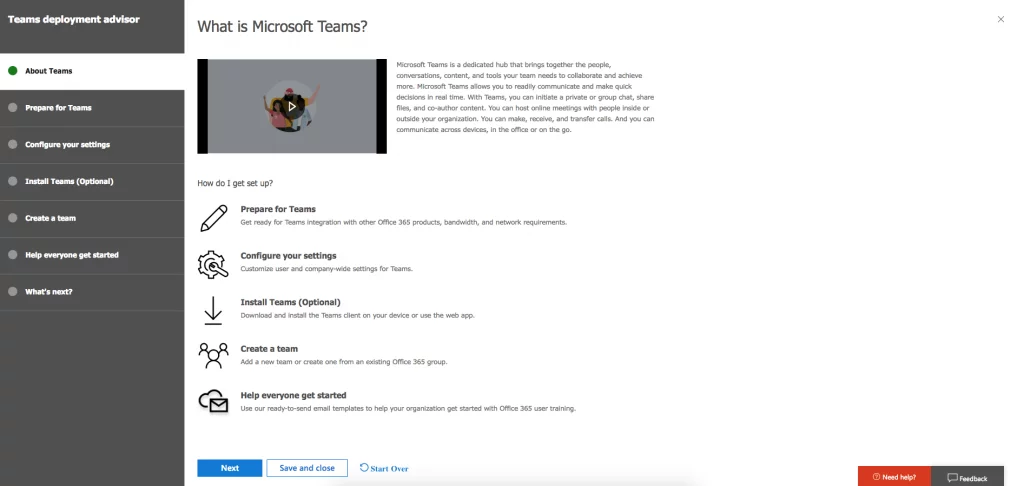Red dead redemption goty ps3 iso. This is a follow up to our initial evaluation and thoughts of MS Teams, found here.
One week ago we decided to temporarily cut the cord to Slack and put the entire company on Teams as a litmus test. It is only a preview product, so we really wanted to be certain that it would not fall down or did not have a “must have” feature that we missed in our earlier evaluation. This morning I received an email from Slack sharing how all the statistics of usage have dropped significantly. This is because we went head first into Teams and have not looked back. Having a solution like Teams thrown into the mix has already had some interesting side effects in our company. The most notable is how Teams has quickly evolved how we organize ourselves. To illustrate, I will share how we internally run business development and project management.
How to Join Multiple Slack Teams on PC or Mac. This wikiHow teaches you how to sign into multiple Slack workspaces on one computer. If you're using Windows, you'll usually find it in. Tweakmaster pro 3.14 crack free download. Which chat application is best for your team? We'll look at the pros and cons of Microsoft Teams and Slack. We're here to answer your questio. A handpicked and verified list of 2000 Slack And Teams chat groups. These communities are grouped by categories: IT, Product, Marketing, Hardware, Finance, Local, Miscellaneous.
Business development and project management need to work closely together. But before they do, it often takes weeks and months to turn an opportunity into a project. This is the hard work of business development to build up a relationship and trust with a potential client. Before Teams, this hard work manifested in dozens of email conversations, late night Skype messages, and voice conversations about how to work with the client and transform that opportunity into a project. All of those emails and messages end up being “jungle knowledge” and in the heads of the people working the opportunity. Why were specific features important to the client? Why type of temperament does the client have? Where are all those relevant files shared as email attachments and in Skype messaging (when that worked)? Before Teams, project management had to rely solely on the narrative constructed by the business development team because there was no friction free way to organize this information.

Why didn’t we use Slack to capture this information? Surely it is capable of it. I never could put my finger on it until we started using Teams. It turns out that Slack has been too flat organizationally for our purposes. We created other ways to organize ourselves that Slack was not providing. For example, email distribution lists are a great way to have multiple conversations that are team centric. In Slack, certainly a channel can be used as an analogy to a distribution list, but it is a flat conversation. In our business development team, for example, there are many opportunities that are discussed simultaneously in different email threads. Email is a great friction free approach to do this, but it’s horrible for aggregating and organizing all the information for other people not on those email threads over a period of time. In a Slack channel, it is too difficult for us to have multiple conversations simultaneously in a single channel because of how Slack works – it’s just too flat for us. We could have created a channel for each opportunity, but the thought of having channels that might live for only a few hours and ending up with dozens (and eventually hundreds) of unused channels to maintain sounded too broken for our purposes. Email is just too easy to use. So we buffered this by having some conversations in email to team centric distribution lists and relied on Slack for two types of conversations: water cooler conversations and focused team conversations. These focused team conversations are project centric where one thing is discussed at a time. For larger projects, we would create different channels to segregate the chatter. This seemed to work well enough for us, but Teams changed that.
- Slack is a channel-based messaging platform. With Slack, people can work together more effectively, connect all their software tools and services, and find the information they need to do their bes.
- Microsoft Teams - Chat-based workspace in Office 365. Slack - Bring all your communication together in one place.
An important distinction between Slack and Teams is that how conversations are managed. In Slack, a channel feels like a single conversation. In Teams, multiple conversations can happen within a channel. Actually, for a bunch of Slack users, this was confusing to us at first. When in a team channel, it’s too easy just to write another message. In Slack this works great because the channel is flat. But in a Teams’ channel, when in the channel you need reply to the specific conversation versus just adding your response to the end of the channel. If you don’t reply and just start typing in a response like you would in Slack, you start a new conversation. This is confusing at first but after a few moments and working with Teams, it starts to make much more sense. As conversations are replied to and grow, the latest reply makes the respective conversation the “most relevant” in the channel. This might all seem overwhelming, and you would be right if you did not use the Teams’ Activity functionality. The Activity tab is a cross section of all conversations across all teams and all chats directed to you. It is the email equivalent to unread emails in your inbox. Within the Activity tab, a flat list of messages directed towards you is presented. By selecting one of the messages, the related channel and conversation is loaded. I would be overwhelmed without this capability.
Before a business development opportunity is something worth pursuing, it is a just a lead. When it is a lead, we now use a Business Development Team, and use a separate conversation to discuss the lead. No longer are we sending an email to the Business Development distribution list. Once the lead becomes more viable and the possibility of signing a client increases, we create a Team specific to that client. Only the business development people working on the lead are put into that Team. All files the client shares with us are stored with the Team. No internal email conversations happen anymore – they happen in the Team. No Skype messaging happens anymore – that happens in the Team. If a voice and/or video chat needs to happen internally, that does not happen in Skype anymore either – that happens in the Team. If I didn’t need Skype for messaging with people outside my organization, or for VOIP, I wouldn’t need Skype – I could just use Teams. Any conversations we have with clients happens with a 3rd party web conferencing product. We needed a product that was low friction for our clients, affordable, and could use dial in and mobile and laptop devices to connect.
Slack V Teams Sign In
Another aspect of Teams we are embracing is its integration with OneNote. The business development team stored a OneNote as a “sales Wiki” to centralize information. We record notes in OneNote when we have meetings with the client. This is stored in SharePoint. Now, since OneNote is first class citizen in Teams, each Team has its own virtual Wiki powered by OneNote. Teams is becoming a focal point to how we get to all of our information. No longer will we have to hunt it down. No more will it be stored in various places in emails, OneNote notebooks, un-locatable places in SharePoint, and Skype messaging. Teams is binding it all together for us.

Back to our process, once the client signs on and there is a project, we add a Project Manager to the Team. The Project Manager adds their team members. All of the business development conversations will be there for the project team. All the files are right there stored with the Team. Any notes from meetings will be in the OneNote Wiki. We use SharePoint to manage documents for Project Teams, and we provision external client access to specific SharePoint libraries. It was always “painful” to navigate to the project team site deep in our SharePoint site collection, but now that document library is manually associated to the Team for quick access by the Project Manager. Our Technical Leads bind their Team to their Visual Studio Team Services project so that user stories are quickly accessible within the Team. And our VSTS build servers automatically connect to Teams and produce build reports right into channels. So far, so good – actually we are all pretty happy with how all of this has come together.
Slack V Teams Vs
From an individual’s perspective, as my email traffic and Skype messages have quickly diminished this past week, I find that I need to find new ways to organize myself with Teams. For example, Outlook has a Swiss army knife of possibilities to organize and categorize emails. A quick way for me to highlight things I need to act upon soon is to keep certain emails unread. I feel like I am missing that analogy in Teams, but they do allow you to bookmark a conversation through an act of “saving” it. Retrieving “saved” conversations probably should be moved within the Activity tab versus being tucked away within my Profile tab. Perhaps items in the Activity list could be tagged in ways to organize my various task lists, including keeping an item unread should be considered. It is important to note that not all messaging is Team centric. You can chat to one or more people Teams. This is the direct equivalent to Skype messaging and how Teams can fulfill that need.
Slack Vs Teams Free

Finally, I just uninstalled Slack. We have completely stopped using it internally. But I also uninstalled Skype for Business. The web client for Skype for Business works quite well for external users, and it appears that all internal voice conversations via Teams goes through the Skype for Business backbone and is completely functional without Skype for Business installed. We schedule meetings through Teams when we need voice chat now (with internal folks) vs running to Skype or Skype for Business. I still need Skype for external user messaging and VOIP, otherwise it would have been on my hit list as well. And my 3rd party web conferencing tool will not be going away soon.
It’s a bit hard to believe that Teams is only in a preview state – it hasn’t crashed on me once (knock on wood) and the mobile apps work reliably. All of us can’t wait for the additional features on Microsoft’s roadmap and are looking forward to the ride.
